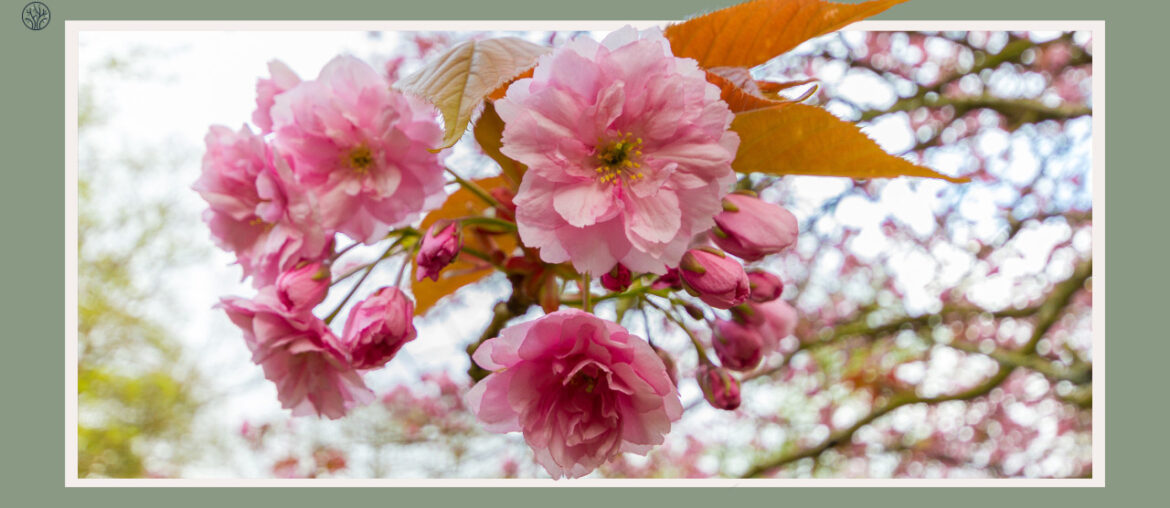If you want to turn your garden into a natural perfume, you can choose from a variety of trees that smell good to delight your senses. These trees are not only beautiful to look at but also have unique and pleasant smells that fill the air. You can enjoy different scents, from sweet and floral to spicy and refreshing, depending on the trees you plant. This guide will help you learn more about each tree’s features and the sensory experiences they create.
Fragrant Flowering Trees for Every Yard
In every yard, there’s potential for beauty that appeals to all the senses, including the sense of smell. The right flowering trees can elevate a simple garden into an aromatic sanctuary, offering seasonal blooms that not only dazzle the eyes but also perfume the air.
Pink Mimosa Tree
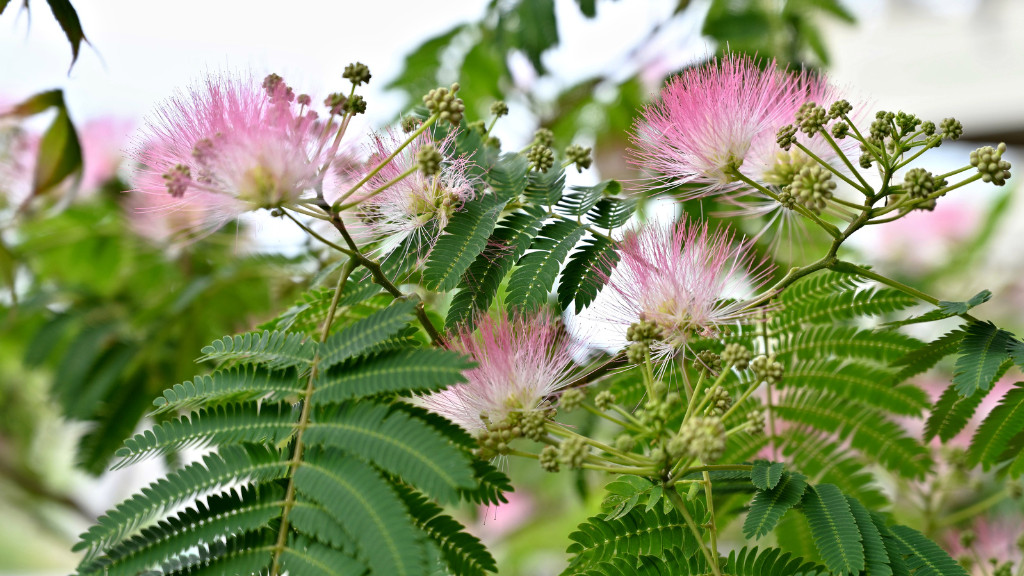
- Botanical Name: Albizia julibrissin ‘Rosea’
- Fragrance: A sweet, confectionery scent that intensifies in the warmth of the sun.
- Bloom Season: Flowers appear from late spring to mid-summer, offering a long-lasting display.
- Climate Adaptability: Suitable for USDA zones 6-9, it’s versatile for various temperate locales.
- Growth Habits: This species can reach up to 35 feet, with a rapid growth rate and a preference for full sun to partial shade.
- Soil Preference: Well-drained soil is ideal for optimal growth and bloom production.
- Pollinator Friendly: The blooms are a beacon for bees, butterflies, and hummingbirds.
If you love pink and sweet, you will love the Pink Mimosa Tree. It has soft, fluffy pink flowers that smell like candy. The fern-like leaves are thin and feathery, giving the tree a light and airy look. The tree can grow well in many places, and it does not need much care. It grows fast and can adapt to different soils. The Pink Mimosa’s flowers are not only beautiful but also useful. They attract many pollinators that help the environment. The Pink Mimosa Tree is a great choice for adding fragrance and color to your garden.
Okame Cherry Tree
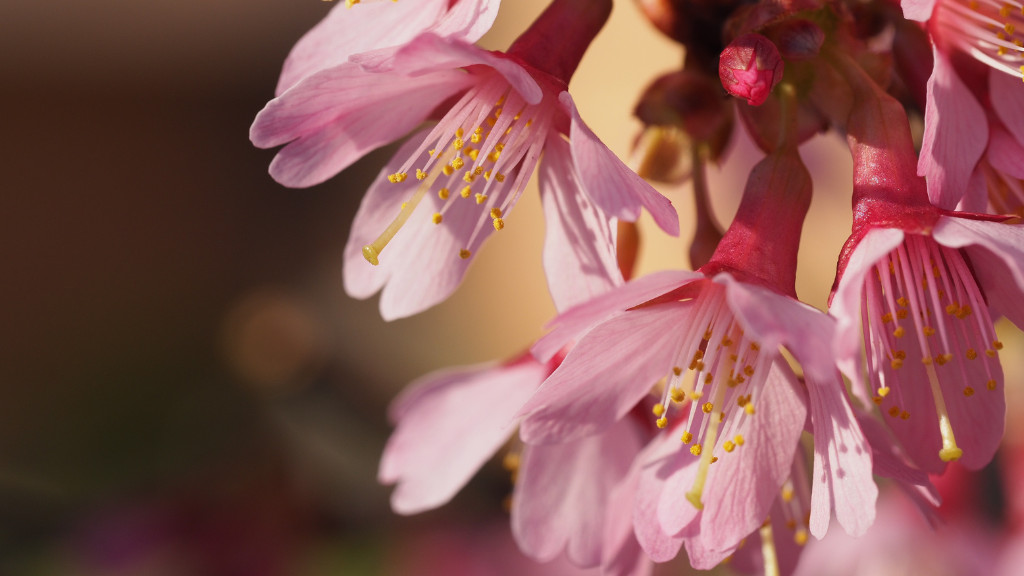
- Botanical Name: Prunus ‘Okame’
- Fragrance: Delicate floral with a hint of almond.
- Bloom Season: One of the first to bloom in early spring.
- Climate Adaptability: Grows well in USDA zones 6-9.
- Growth Habits: Reaches up to 20-30 feet in height with a 15-20 foot spread.
- Soil Preference: Prefers moist, well-drained acidic soil.
- Pollinator Friendly: Attracts bees and butterflies.
The Okame Cherry Tree is a spring beauty with pink flowers that smell like flowers and almonds. It brightens up the winter with its colorful blooms that stand out in the landscape. It grows at a medium pace and has a wide, vase-shaped top, making it look lovely even when it doesn’t have bright pink leaves. The Okame Cherry is more than just a pretty and fragrant tree. It also has an interesting bark that has a pattern that adds a touch of texture to an already beautiful plan.
Kwanzan Cherry Tree
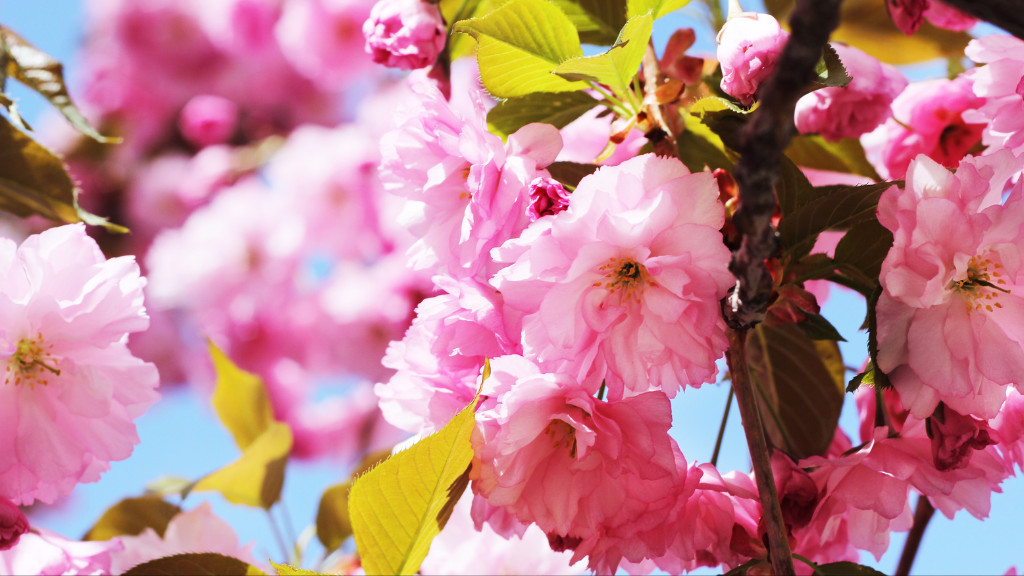
- Botanical Name: Prunus serrulata ‘Kwanzan’
- Fragrance: Light, pleasant scent.
- Bloom Season: Mid-spring, after the Okame Cherry.
- Climate Adaptability: Suitable for USDA zones 5-9.
- Growth Habits: Can grow to 25-30 feet tall with a similar spread.
- Soil Preference: Adapts to various soil types, and prefers well-drained conditions.
- Pollinator Friendly: Attracts pollinators with its abundant flowers.
The Kwanzan Cherry Tree is a spring wonder with its pink, fluffy flowers that look like little bouquets. They bloom in the middle of spring and have a gentle and nice smell. This tree is easy to grow and can live in different kinds of soil. It also has beautiful leaves that change color to orange and red in the fall. The Kwanzan Cherry Tree is a tree that gives you beauty and fragrance all year round.
Yoshino Cherry Tree
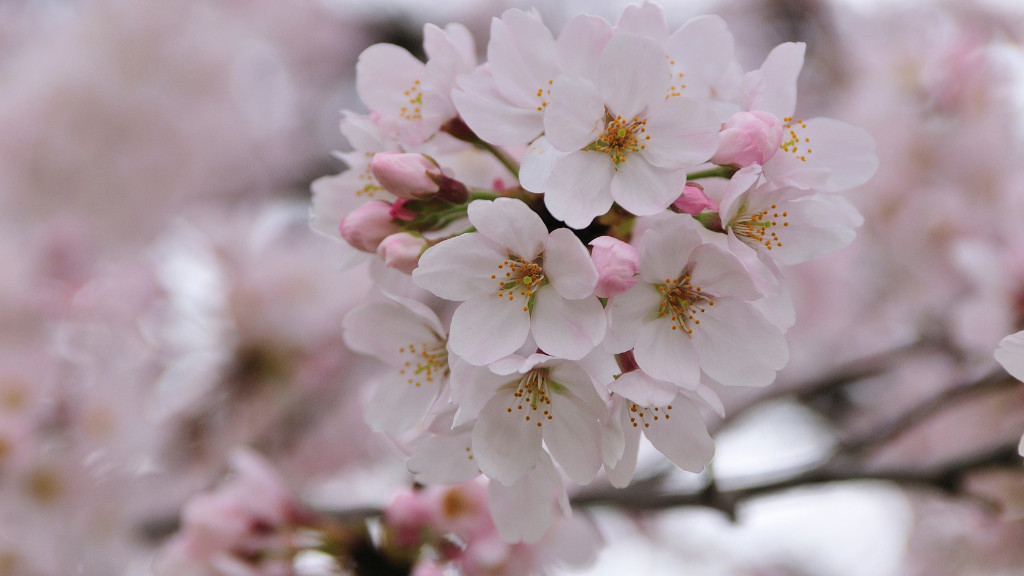
- Botanical Name: Prunus x yedoensis
- Fragrance: Light and fresh, with a hint of spice.
- Bloom Season: Early spring, often coinciding with the Okame Cherry.
- Climate Adaptability: Thrives in USDA zones 5-8.
- Growth Habits: Grows to 20-30 feet tall with a 20-25 foot spread.
- Soil Preference: Prefers well-drained soil but is adaptable to various soil types.
- Pollinator Friendly: A favorite among bees during its bloom period.
The Yoshino Cherry Tree is a spring star, famous for its white and pink flowers that fill the air with a spicy and fresh smell. You can see these trees at the National Cherry Blossom Festival in Washington, D.C. The Yoshino Cherry is a lovely tree that has a wide canopy that gives you shade in the summer. It’s a tree that smells great and helps nature, attracting pollinators when it has flowers.
Royal Star Magnolia
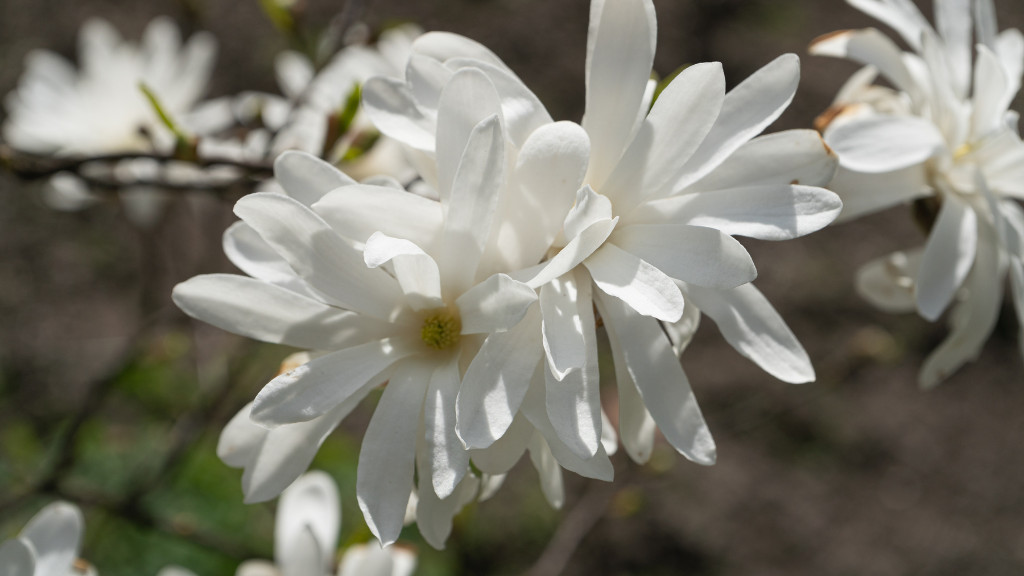
- Botanical Name: Magnolia stellata ‘Royal Star’
- Fragrance: Intense and sweet, reminiscent of vanilla.
- Bloom Season: Early spring, before the leaves appear.
- Climate Adaptability: Hardy in USDA zones 4-8.
- Growth Habits: Compact size, growing to 10-20 feet with a 10-15 foot spread.
- Soil Preference: Prefers acidic, loamy, and well-drained soil but is quite adaptable.
The Royal Star Magnolia is a small tree that fits in any garden or makes a big impression in a large yard. It is one of the first trees to say goodbye to winter with its white, star-like flowers that smell like vanilla. This magnolia is very strong, even though it looks delicate. The Royal Star can grow well in many places, and it does not take up much space. It is a great choice for many gardeners.
Sweetbay Magnolia
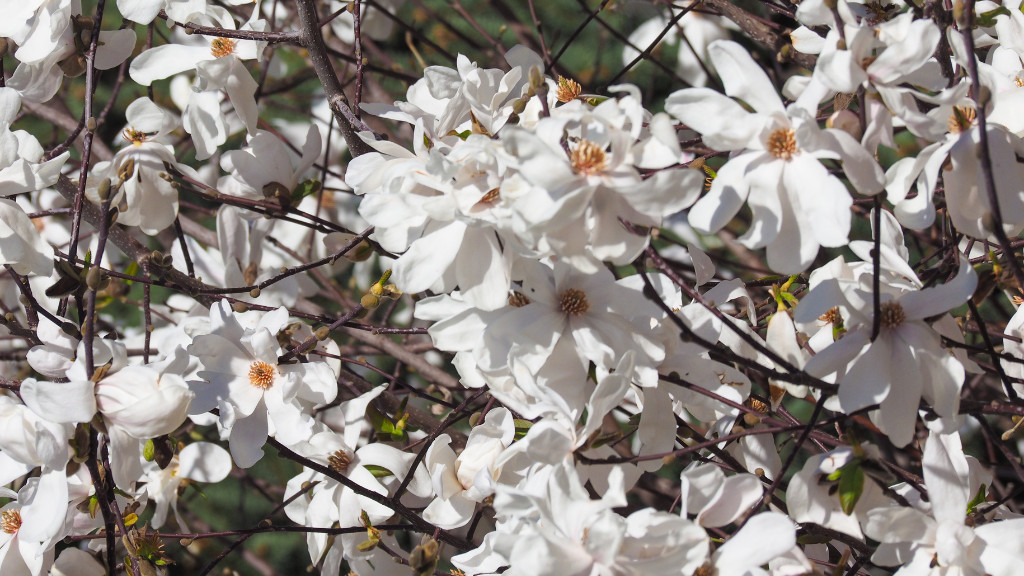
- Botanical Name: Magnolia virginiana
- Fragrance: Light lemony scent that is subtle yet refreshing.
- Bloom Season: Late spring to early summer, with sporadic blooming throughout the season.
- Climate Adaptability: Grows well in USDA zones 5-10.
- Growth Habits: Typically reaches 10-20 feet in height, and can grow taller in the wild.
- Soil Preference: Tolerant of wet soils, prefers acidic to neutral soil.
The Sweetbay Magnolia is one of the most beautiful trees with white flowers that have a lemony smell. It can grow in wet soils, unlike other magnolias, so it can fit in different garden places. It has flowers for a long time, giving you fragrance and color in the warm months. The Sweetbay Magnolia has a graceful shape and a lovely scent that make it a classy tree for your garden.
Blue Chinese Wisteria Tree
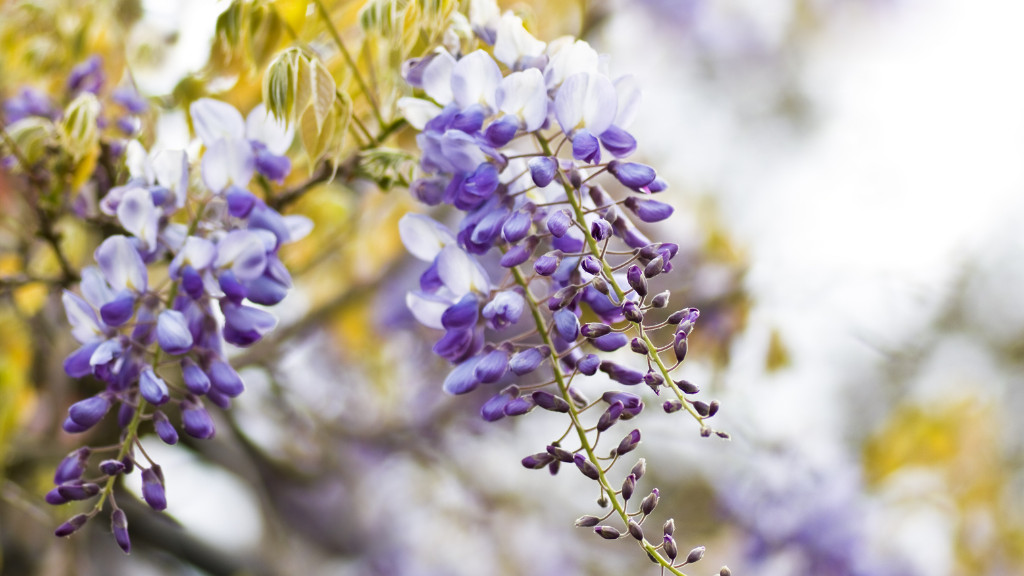
- Botanical Name: Wisteria sinensis
- Fragrance: Potent and sweet, with a grape-like essence.
- Bloom Season: Late spring to early summer.
- Climate Adaptability: Suitable for USDA zones 5-8.
- Growth Habits: Can grow to 15-25 feet as a tree form.
- Soil Preference: Prefers fertile, moist, well-drained soil but is adaptable to many soil types.
The Blue Chinese Wisteria Tree is a stunning tree with blue-purple flowers that hang down in long bunches. They smell very sweet, like grapes. You can train this wisteria to grow like a tree, and it will be the star of your garden. The scent and the color of this tree are amazing. You need to take good care of this wisteria because it can grow very fast. But if you do, it will be a beautiful and fragrant tree for your space.
Little Gem Magnolia
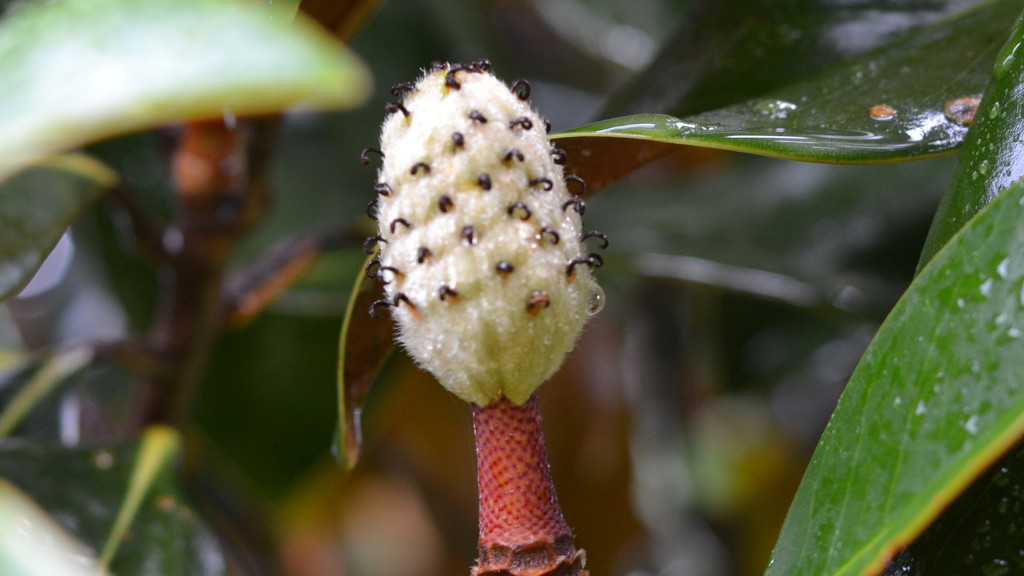
- Botanical Name: Magnolia grandiflora ‘Little Gem’
- Fragrance: Intense, sweet, with a lemony undertone.
- Bloom Season: Prolonged blooming from spring to fall.
- Climate Adaptability: Hardy in USDA zones 7-9.
- Growth Habits: Dwarf variety, reaching up to 20 feet tall.
- Soil Preference: Prefers acidic, moist, well-drained soils.
The ‘Little Gem’ Magnolia is a small but beautiful magnolia tree that fits in small spaces. It has big, white flowers that smell sweet and lemony. It blooms for a long time, giving you fragrance and beauty all year round. This magnolia has shiny, green leaves with a soft, brown back, like other magnolias. It is a great choice if you want a magnolia tree that is easy to care for.
Southern Magnolia
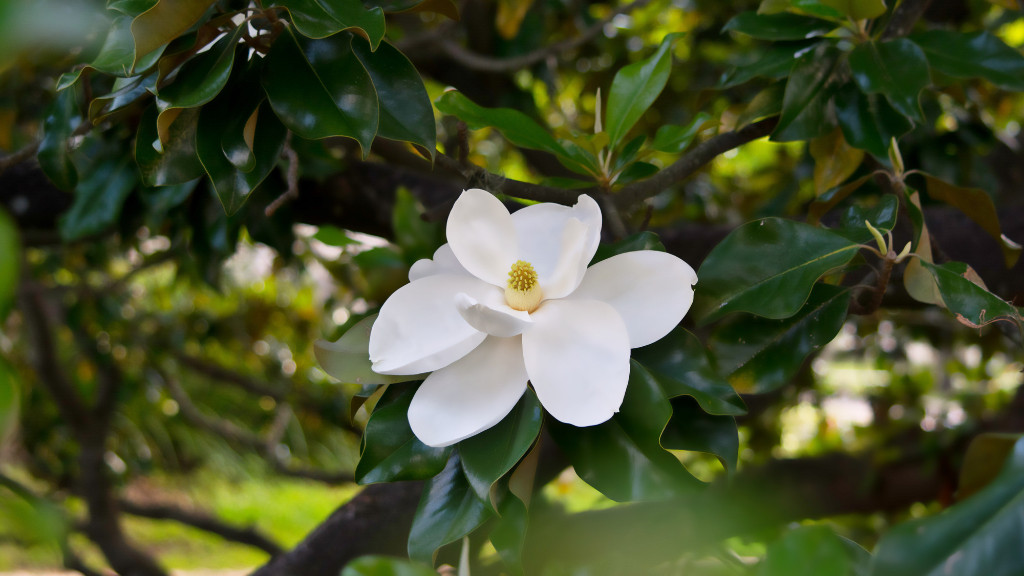
- Botanical Name: Magnolia grandiflora
- Fragrance: Powerful and sweet, with notes of citrus.
- Bloom Season: Late spring to early summer, with sporadic blooms throughout the season.
- Climate Adaptability: Thrives in USDA zones 6-10.
- Growth Habits: Large and stately, can reach 60-80 feet in height.
- Soil Preference: Prefers well-drained, slightly acidic soil; tolerates clay soils.
The Southern Magnolia is a classic tree of the South, with big, shiny leaves and huge, white flowers that smell wonderful. The scent is sweet and rich, and it spreads around the tree, especially at night. This magnolia is beautiful all year round, with green leaves that make any garden look nice. The Southern Magnolia is a proud and strong tree that is loved and admired in warm places.
Cold-Growing Zone Fragrant Trees
In cooler climates, the choice of fragrant trees may seem limited, but there are still many robust options that can bring a delightful aroma to your garden throughout the growing season. These trees have adapted to withstand the chillier temperatures and often have the added benefit of a strong, enduring scent that can stand up to the cold air.
Black Locust & Locust Trees
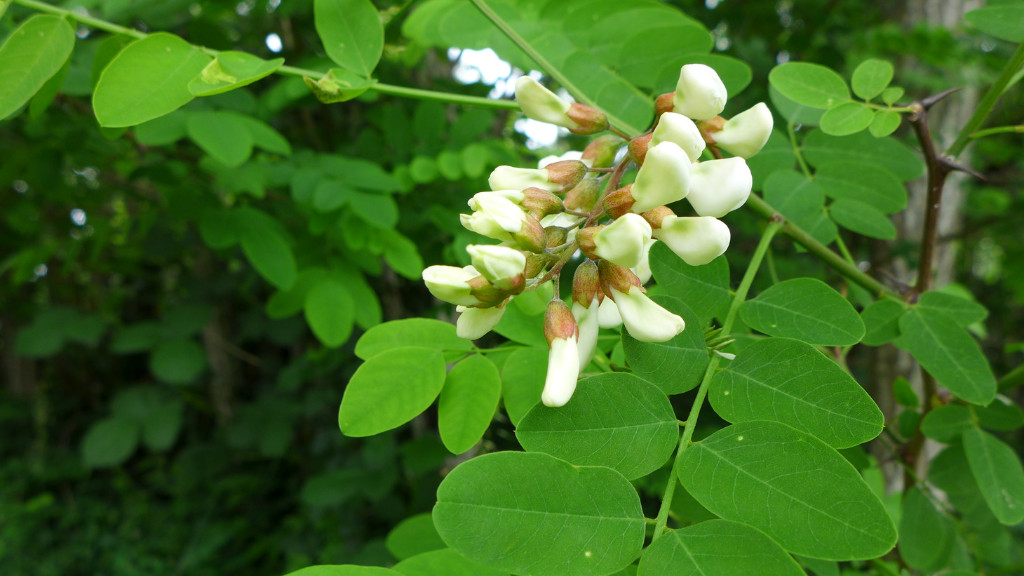
- Botanical Name: Robinia pseudoacacia
- Fragrance: Sweet, grape-like fragrance that carries in the breeze.
- Bloom Season: Late spring, producing abundant clusters of white flowers.
- Climate Adaptability: Extremely hardy, thriving in USDA zones 4-8.
- Growth Habits: Can reach heights of 40-100 feet, depending on the variety.
- Soil Preference: Tolerant of poor soils, but prefers well-drained loam.
Black Locust trees are strong and smell great. They have white flowers that look nice and bring bees, which help the plants. These trees are good for cold places because they can grow in bad soils. The wood of the Black Locust is also very good because it lasts long and does not rot.
Fruiting Deciduous Trees
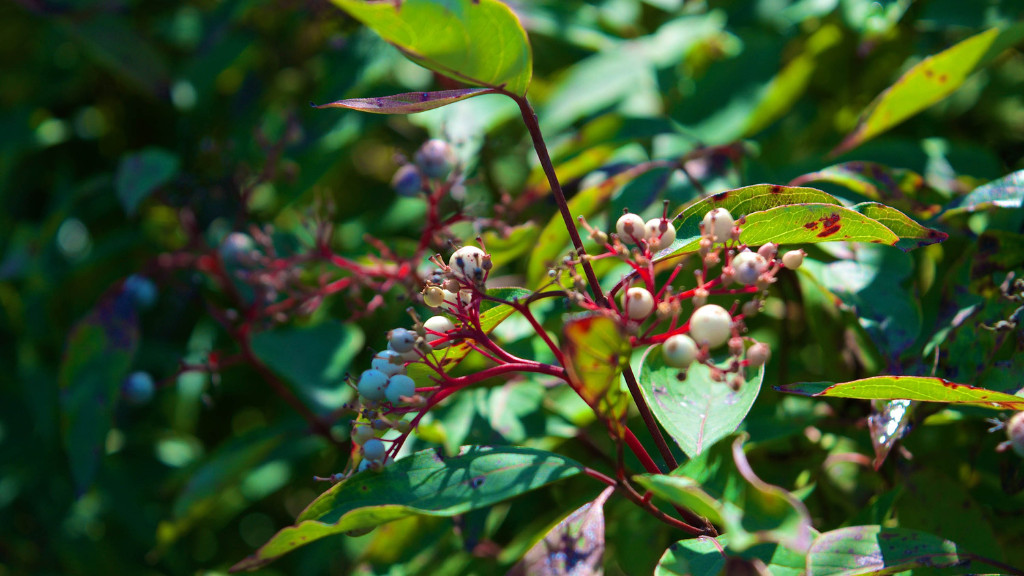
- Examples: Apple (Malus domestica), Cherry (Prunus avium), Pear (Pyrus communis)
- Fragrance: Varies from sweet to subtly spiced, depending on the species.
- Bloom Season: Spring, with the timing varying slightly between species.
- Climate Adaptability: Generally hardy, with many varieties suitable for zones 4-8.
- Growth Habits: Size and spread can vary widely, with some trees reaching up to 30 feet.
- Soil Preference: Prefer rich, well-drained soil; specific needs can vary by type.
If you want to enjoy both fruits and flowers, you can plant some fruiting deciduous trees in your garden. These are trees that lose their leaves in winter but grow new ones in spring. They also have beautiful flowers that smell different. You can smell the sweet apple flowers, the gentle cherry flowers, and the spicy pear flowers in spring. These trees also give you fruits in fall, and look nice in winter with their bare branches. These trees are great for your garden because they give you beauty and fragrance for many years.
Magnolia Trees
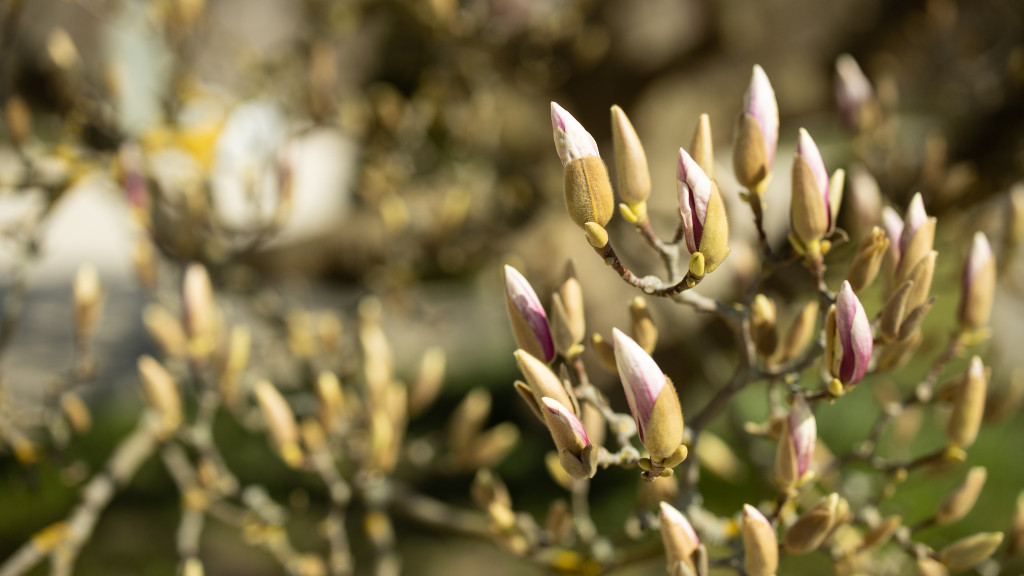
- Botanical Name: Magnolia spp.
- Fragrance: Rich and sweet, often with citrus or spicy undertones.
- Bloom Season: Varies by species, typically in early spring.
- Climate Adaptability: Most are hardy in USDA zones 4-9.
- Growth Habits: Size varies by species, with some reaching up to 80 feet.
- Soil Preference: Prefer moist, well-drained, slightly acidic soil.
Spring is the time to enjoy the beauty and smell of magnolia trees. There are many kinds of magnolia trees, and each one has its own fragrance and shape. You can see the big, white flowers and smell the lemony scent of the Southern Magnolia, or the small, star-like flowers of the Star Magnolia. The leaves are shiny and the flowers are stunning, and some can be very big. Some magnolia trees can grow in cold places, so many people in the north can have them in their gardens. Magnolia trees are a wonderful choice for spring.
Linden Trees
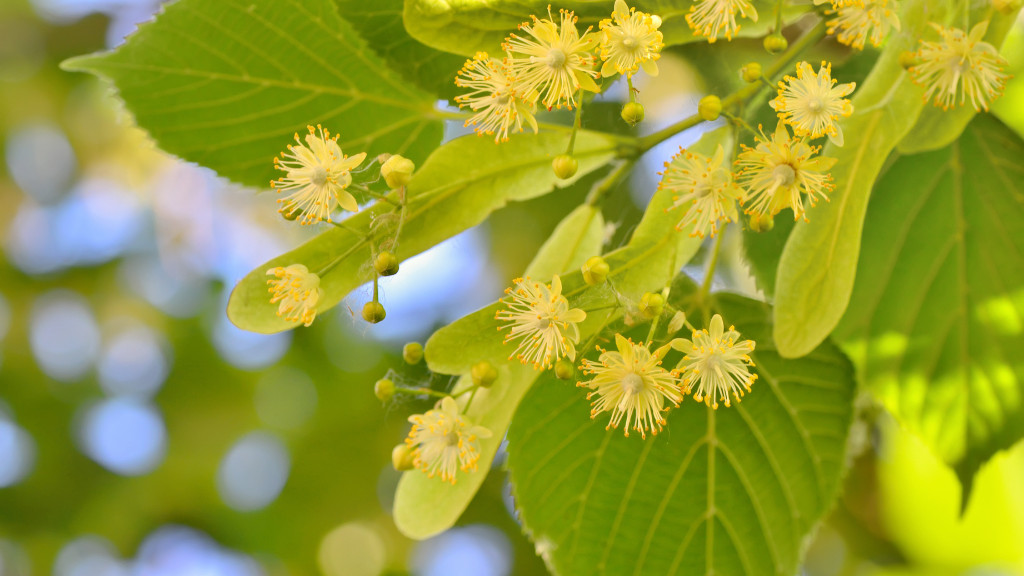
- Botanical Name: Tilia spp.
- Fragrance: Sweet and honey-like, with a hint of herbal notes.
- Bloom Season: Mid to late summer, when many other trees have finished blooming.
- Climate Adaptability: Generally hardy in USDA zones 3-7.
- Growth Habits: Can grow to 60-120 feet, depending on the species.
- Soil Preference: Adaptable to a wide range of soil types, prefers well-drained soils.
Linden trees, or Basswood, are great for their nice smell and their cool shade. The flowers are small and yellow, but they have a sweet, honey-like smell that can spread far. These trees are also good for animals, especially bees, which make a special honey from the nectar. Lindens are strong trees that can grow in different soils and have pretty, heart-shaped leaves that turn yellow in the fall.
Japanese Lilac Trees
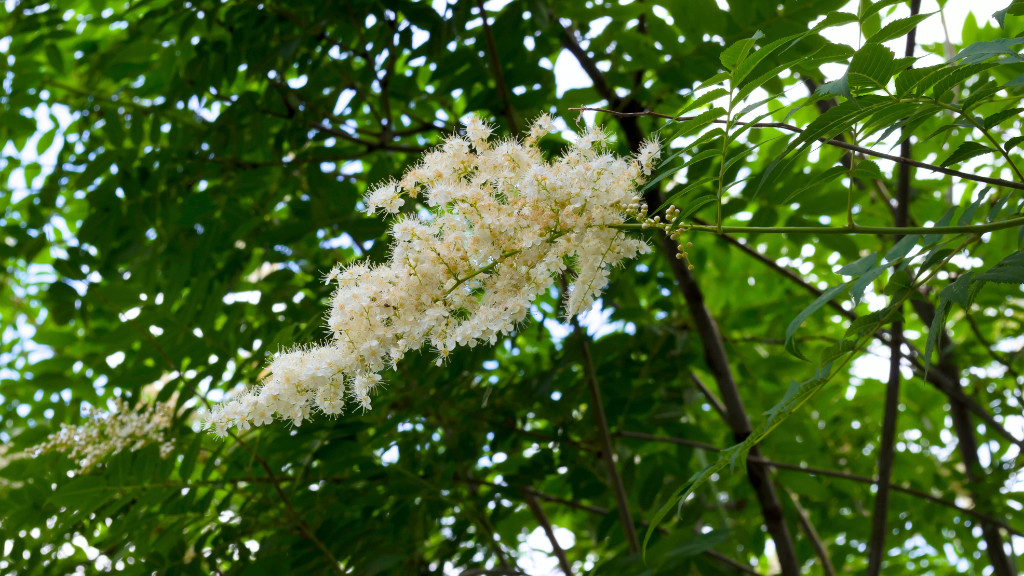
- Botanical Name: Syringa reticulata
- Fragrance: Strong and sweet, with a lilac-like scent.
- Bloom Season: Late spring to early summer.
- Climate Adaptability: Hardy in USDA zones 3-7.
- Growth Habits: Typically reaches 20-30 feet in height with a 15-20 foot spread.
- Soil Preference: Prefers well-drained, fertile soil, but is quite adaptable.
The Japanese Lilac Tree is a strong and lasting tree that has flowers in late spring or early summer. The flowers smell sweet and strong, like the lilac you know. The Japanese Lilac is not a bush, but a small tree that can grow in the city. The white flowers look nice with the dark green leaves, and the tree can live in different soils and with city air. The Japanese Lilac Tree is a smart and pretty choice for city gardens.
Fragrant Trees for Hot Climates
Warm climates offer the perfect environment for a variety of fragrant trees that can tolerate and even thrive in, the heat. These trees not only provide a respite from the sun with their shade but also enhance the air with their unique and refreshing scents.
Citrus Trees
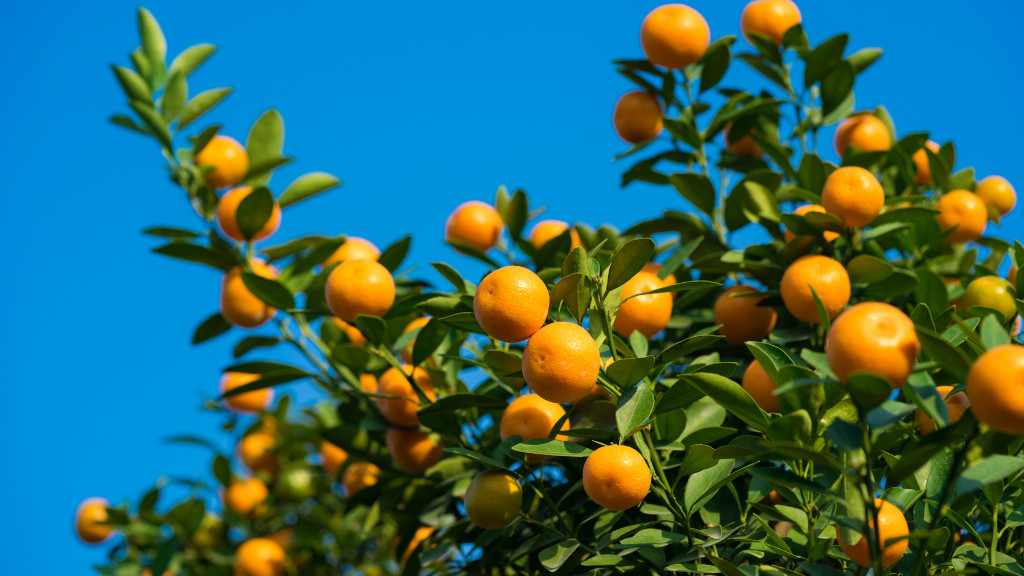
- Botanical Name: Citrus spp.
- Fragrance: Sweet and zesty, reminiscent of the fruit they bear.
- Bloom Season: Late winter to early spring, depending on the species.
- Climate Adaptability: Best suited for USDA zones 9-11.
- Growth Habits: Generally small to medium in size, around 15-30 feet tall.
- Soil Preference: Well-drained, fertile soil with a slightly acidic to neutral pH.
Citrus trees are great for their tasty fruit and their sweet-smelling flowers. The flowers have a mix of sweet and sour smells, which are stronger at night. These trees grow well in hot places, where they have flowers and fruit all year round. The green leaves and the colorful fruit make these trees look nice too. Citrus trees are useful and beautiful trees.
Strawberry Tree
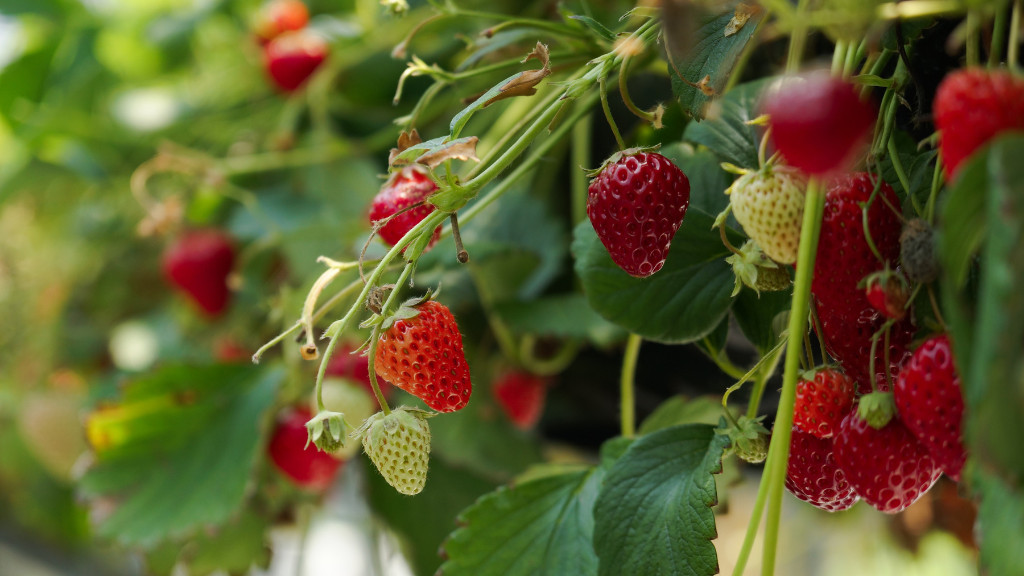
- Botanical Name: Arbutus unedo
- Fragrance: Subtle, sweet, with a hint of honey.
- Bloom Season: Fall, which is unique among many flowering trees.
- Climate Adaptability: Suitable for USDA zones 7-10.
- Growth Habits: Slow-growing, reaching up to 8-35 feet tall.
- Soil Preference: Adaptable to a range of soils; prefers well-drained conditions.
The Strawberry Tree is a tree that has flowers and fruits all year round. The flowers are white or pink and smell sweet. The tree grows fruits that are red and have a delicious taste. This tree is good for hot places because it does not need much water and it has flowers in the fall when other plants do not. The bees like the flowers too. The tree is small and has a nice bark, so it can fit in any garden or make a big garden look better. The Strawberry Tree is a tree that gives you fragrance and fruit.
Japanese Snowbell Trees
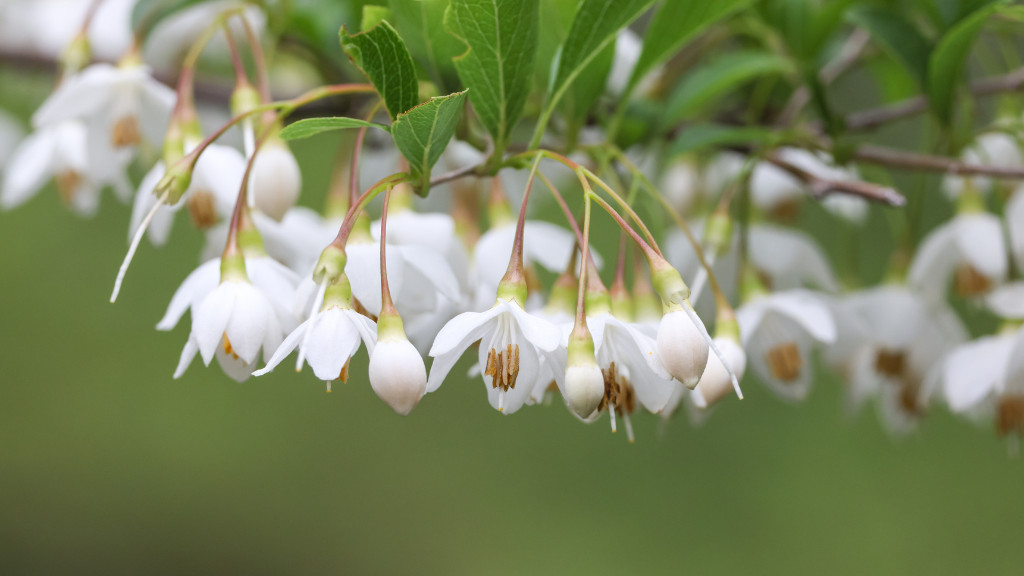
- Botanical Name: Styrax japonicus
- Fragrance: Lightly sweet and clean, with a subtle floral note.
- Bloom Season: Late spring to early summer.
- Climate Adaptability: Thrives in USDA zones 5-8.
- Growth Habits: A smaller tree, usually reaching 20-30 feet in height.
- Soil Preference: Prefers well-drained, rich soil; can tolerate a variety of soil types.
The Japanese Snowbell Tree is a beautiful tree with white, bell-like flowers that hang down from its branches. The flowers smell gentle and sweet. The tree is small and has a nice shape, so it can fit in any garden. The flowers make any garden look peaceful and pretty. The Japanese Snowbell is an easy tree to take care of, and it does not have roots that can damage paths or buildings. The Japanese Snowbell Tree is a tree that gives you grace and fragrance.
Bay Laurel
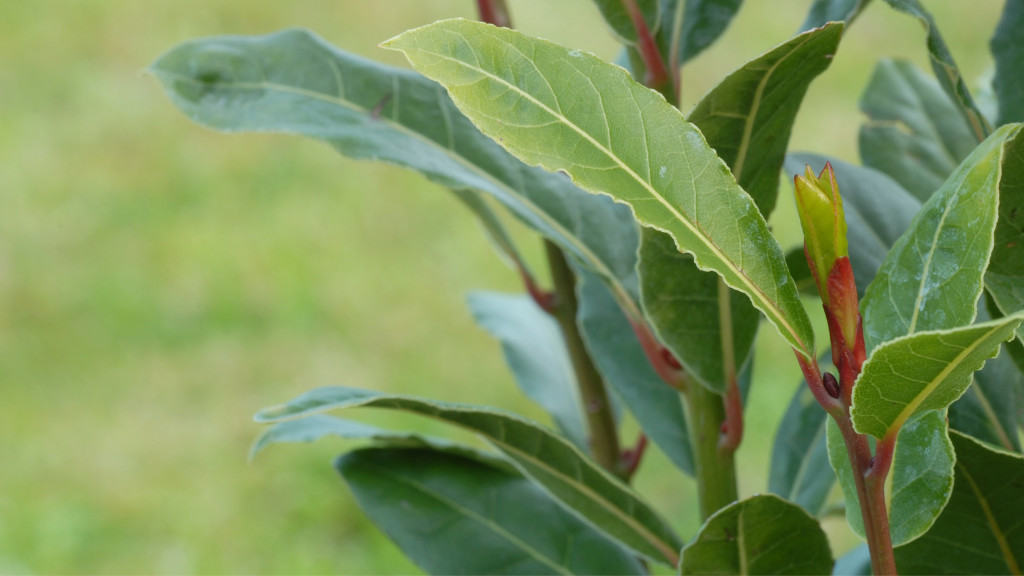
- Botanical Name: Laurus nobilis
- Fragrance: Aromatic and herbal, with notes of camphor and spice.
- Bloom Season: Spring, though the flowers are not the primary source of fragrance.
- Climate Adaptability: Best in USDA zones 8-10.
- Growth Habits: Can grow to 40 feet tall but is often kept smaller through pruning.
- Soil Preference: Prefers well-drained soil and can tolerate drought once established.
Bay Laurel is a tree that’s famous for its culinary uses. The leaves, when crushed, release a robust, spicy fragrance that is a staple in many kitchens. While the flowers are small and not very noticeable, the scent of the leaves is enough to make this tree a worthwhile addition to any fragrant garden. You can grow Bay Laurel as a big tree or a small bush or hedge, depending on how you want your garden to look. Bay Laurels can be grown as a tree or pruned into a shrub or hedge, offering versatility in garden design and continuous aromatic foliage throughout the year.
FAQs
What tree smells the nicest?
Some people may have different opinions on what tree smells the best, but many people love the smell of the Magnolia. The Magnolia has big, white flowers that smell sweet and lemony. The Southern Magnolia is one of the most fragrant types of Magnolia.
Which tree is known as the fragrance tree?
The Frangipani is sometimes called the fragrance tree because it has very strong and sweet-smelling flowers. However, the Frangipani is not really a tree, but a tropical plant that can grow like a tree in warm places. The flowers have a lovely, floral scent.
What trees have a fragrance?
Some trees smell good because they have flowers or leaves that give off a nice scent. There are many kinds of trees that have a fragrance, like Magnolia, Lilac, Linden, and some fruit trees.
What tree smells fruity?
Several trees have a fruity scent, with Citrus trees being the most obvious due to their sweet, zesty fragrance that resembles their fruit. Another example is the Strawberry Tree (Arbutus unedo), which has a subtle, sweet smell with a hint of honey.
Which tree is famous for its fragrance?
Some trees are famous for their smell, like the Jasmine tree which has a very sweet and strong smell, or the Magnolia, Lilac, and Wisteria trees which have beautiful and fragrant flowers.
Why do some trees smell good at night?
Some trees smell better at night because they have flowers that open at night and attract animals that pollinate them, like moths and bats. The night air also helps the smell travel farther, so you can smell it more.

